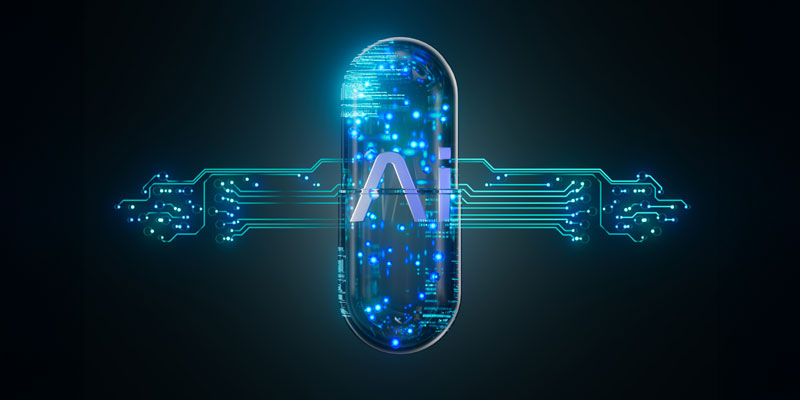America’s healthcare system is a masterpiece of inefficiency that costs taxpayers a whopping $5 trillion a year.
And yet, for all that money, the system feels like it’s stuck in 1998.
Most hospitals can’t even share medical records. The billing system is so confusing, even insurers can’t explain it. And endless paperwork is driving doctors to burnout.
Everywhere you look, the system bleeds time, money, and data. It’s a perfect setup for disruption.
This time, we actually have the technology to fix it: artificial intelligence (AI).
Not to replace doctors. But to eliminate the waste, automate the grunt work, and reconnect the pipes of a broken system.
As I’ll tell you about in a minute, one company is already using AI to fix healthcare at scale.
But first, did you know:
- The US spends nearly 20% of GDP on healthcare.
That’s more than any other developed nation, but with worse outcomes.
That’s not because Americans are sicker. It’s because the system itself is broken.
As anyone who’s visited a hospital knows, the amount of paperwork is staggering. Doctors and nurses spend more time filling out forms than treating patients.
A study in the Annals of Internal Medicine found that for every hour doctors spend with patients, they spend nearly two hours on paperwork.
Think your job is stressful? Try being a nurse for one day.
Since 1970, the number of healthcare administrators has grown 35X faster than the number of doctors.
Maybe that’s why the average health insurance premium now costs $27,000 per year.
Layer after layer of bureaucracy turned healthcare into a spending machine. Costs have spiraled completely out of control.
- Americans now fork out more on healthcare than anything except housing.
Health insurance premiums alone eat up about $1.5 trillion a year.
Meanwhile, a Gallup poll found that only one in six Americans are satisfied with their health coverage. That’s because there’s a Grand-Canyon-sized gap between what people pay and what they get in terms of care.
No wonder medical debt is now the leading cause of personal bankruptcy.
Healthcare is supposed to make life better. But instead, it’s bankrupting families and burning out doctors. I’m not saying hospitals are greedy monsters. They’re just so painfully inefficient.
A third of hospitals still fax patient records. Specialists repeat tests because no one can see previous results. And billions go to waste every year on expired drugs and unused supplies.
According to the Peter G. Peterson Foundation, 25% of all US healthcare spending—about $1 trillion a year—is wasted on inefficiency and administrative waste.
- Before AI cures cancer, it’ll cure inefficiency.
Billing. Scheduling. Claims. Authorizations. Data entry.
A billion small tasks bury doctors in paperwork and drain hospital budgets. AI can automate nearly all of it.
Algorithms already scan and code medical charts faster than human staff. AI assistants record doctor visits and fill out patient notes automatically. Machine learning tools spot billing errors, catch duplicate claims, and process forms in seconds, not weeks.
Hospitals using AI to automate routine admin tasks report cost cuts of up to 30% and faster reimbursements.
|
Every hour of paperwork AI removes gives doctors an hour back with patients…
Every duplicated form it deletes saves thousands in wasted labor…
And every data bottleneck it clears moves the system closer to working like a real business, rather than a government filing cabinet.
- I first introduced you to this AI law in 2020…
The more data you feed AI, the better the answers it gives you.
Healthcare generates mountains of data every day: scans, bloodwork, pathology slides, genomic tests, doctor’s notes.
But 95% of it is never analyzed. It just sits in hospital silos, gathering digital dust.
That’s like running the world’s largest experiment every day and throwing the results in the trash. This data stockpile is a gold mine for AI.
For the first time, we have a tool that can process the entire history of medicine and turn it into something useful:
- It can analyze millions of patient histories to spot disease years before symptoms appear.
- It can read scans faster, and often more accurately, than human experts.
- It can uncover hidden drug interactions buried in mountains of data.
Unlike people, AI doesn’t get tired, distracted, or biased by habit. And once it learns, it never forgets.
In short, AI makes healthcare better, faster, and cheaper.
- Here’s how to profit from this trillion-dollar problem…
In our Disruption_X advisory, my partner Chris Wood and I just released a new special report on the company leading this healthcare revolution.
Its AI platform is already used by thousands of doctors, hospitals, and almost every big drug company.
Each test it completes adds more data to its platform. Each new dataset makes its AI smarter and puts it further ahead of the competition. And each insight saves time, money, and lives.
It’s rapidly emerging as the default AI platform in healthcare.
Disruption_X members can read their new report in the Members’ Area.
If you’re not a member and would like to learn more about this company, go here to see our special deal on Disruption_X. You’ll get details on this report, how we hunt for disruptors with 10-bagger potential, and everything else that comes with your membership.
Stephen McBride
Chief Analyst, RiskHedge



